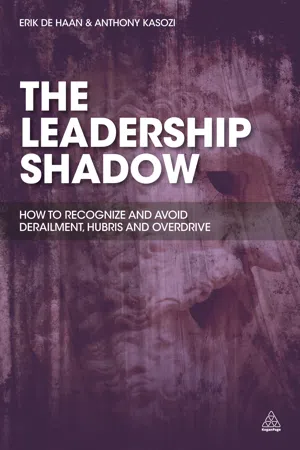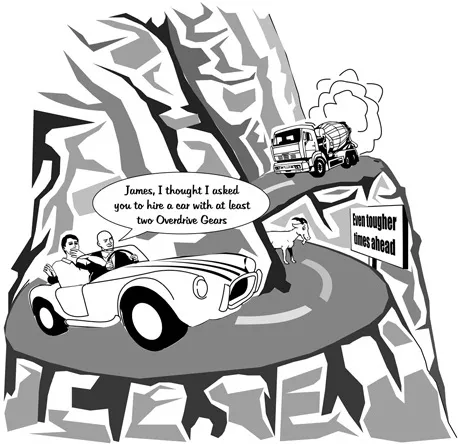![]()
Part one
The way leaders thrive
Introduction: the importance of framing the leadership dance
All the ills of mankind, all the tragic misfortunes that fill the history books, all the political blunders, all the failures of the great leaders have arisen merely from a lack of skill at dancing.
MOLIÈRE, LE BOURGEOIS GENTILHOMME (1670)
In the lighthearted quote above, Molière, being the great artist that he was, ventures a very risky communication about something that is much more profound, existential and unsettling than first appears at face value. He is alluding to the fondness for dancing of the absolute monarch Louis XIV (the self-styled ‘Sun King’). Louis loved ballet and during the early half of his long reign he frequently danced in court ballets. He was a brilliant professional dancer and had a profound knowledge of music. He often had a new ballet written for him and presented in the palace in which he appeared in the central role. Louis had danced in three of Molière’s own comédies-ballets and of all the aristocrats he danced the best. Moreover, since the beginning of his autocratic rule in 1661, he organized large festivities in which the aristocracy was forced to dance in the shadow of the monarch’s talent. Louis set the rhythm and the courtiers had to follow him in a line. As Louis insisted on such royal ballets the aristocracy were obliged to participate in order to stay in the king’s favour. At the same time, being allowed to participate was a royal honour. Not just the courtiers but the whole political establishment had to dance to the king’s tune.
In the quote above Molière is trying ever so gently, behind the protection of frivolous comedy aided by King Louis’ passion for the arts, to open up the field of leadership in his country and make a comment, however indirect and however ironic, about leadership practices at court. He wonders aloud – yet subtly disguised – whether it is good for the state of France that the main focus of court gatherings is dancing and that all courtiers need to dance to the tune of the king, feigning admiration whilst making sure they display less dancing talent than the Sun King himself.
The quote has remained famous as a poignant example of Molière’s great courage in contributing to a discussion about leadership in a place where the norm was that nobody but the king leads, under the motto L’état, c’est moi. It did not always work out well for Molière and his fearless efforts to speak truth to power in the context of Versailles cost him dearly as it resulted in several banned plays, biting opposition and ill health.
Part One of this book will look at the context in which leadership thrives, which in our view is a context different from that experienced in the court of Louis XIV where leadership was the prerogative of one single man with absolute power. We will argue that it is precisely where many can be involved in leadership that better decisions are made, where the positive impact of decisions is greater, and the excesses and extravagance of leadership are avoided.
Whilst exploring the context for good leadership we will spend time on definitions of leadership. Through hard experience, we have learned that how one defines leadership, even if implicitly, matters immensely and determines to a large extent how one behaves as a leader and as a follower.
In the mind of the Sun King the implicit definition of leadership was: ‘All power resides with me, the state and the organization are synonymous with me, and they dance to my decrees’. From this absolute power something may occasionally trickle down to lower levels, for example when the king is in a good mood or feels particularly safe. There is absolutely no obligation on his part to do anything specific, not even to occupy himself with any affairs of the state. His definition affords Louis XIV complete freedom and his followers none. In recent times we have seen plenty of other absolute dictators who cynically did not bother to occupy themselves with the responsibility of the office and the fact that their word was ‘law’, until something ‘interesting’ happened like a big sporting event or something ‘challenging’ like a revolt.
In such a context of ‘absolute leadership’, accepting the prevalent definition means resigning yourself to insignificance. And it also means resigning yourself to having no say whatsoever on what you do, with whom you collaborate, or how you are led. Adopting a different definition of leadership, where possible, provides you with a completely different outlook and offers a means to change and influence your own affairs. It is not just the case that your personal definition of leadership and its particular validity in your current context determine how you act and influence as a leader. Such an (implicit) definition also determines how you conduct yourself within leadership conversations. Such a productive view of leadership and your own role as a leader means that you can have a vision for the circumstances and a leadership contribution for most opportunities that arise. In other words, your (implicit) definition of leadership determines how you lead in practice, on a day-to-day basis.
After looking at characteristics of the modern business world in Chapter 1, we will provide our own definition of leadership in Chapter 2 and explore what consequences flow from this definition and what criteria for good leadership we can deduce from it. In Chapter 3 we will look at how participating in leadership brings out a dance of the ‘Sun’ and the ‘Shadow’, of the light and dark sides of our personality. Finally, in Chapter 4 we offer help with reflecting on your own leadership practice by inviting you to ask yourself questions that we believe are relevant for your personal journey as a leader.
![]()
01
The context that produces a leader
Of all creatures that breathe and move upon the Earth, nothing is bred that is weaker than man.
HOMER, THE ODYSSEY (CA 850 BC)
The 21st-century world of work: not a place for wimps
If you are working as a senior executive and are actively engaged in managing and leading an organization today, your experience of top leadership probably suggests that the 21st-century world is not a place for equivocating wimps.
As an executive you are expected to be decisive. The problems you face are presented to you as needing deliberate, quick and intelligent action. You have been trained and repeatedly encouraged to be ‘tough’ and to prevail in the face of challenge and adversity. Everywhere you go you face situations that require physical and psychological resilience in order to navigate the complex and contradictory challenges as well as the massive workloads.
But what has created the tremendous demands you face? Why are you (like many others) so severely stretched? What is it about the context within which you work that has created the experiences you and others face? Why do you have to adapt to this?
As we have worked with senior executives facing these questions we have looked back over the last 30 years and into the last quarter of the 20th century. We can see that today the world is very different from the place where we started our working lives when one of us was selected as a young corporate recruit to join the fast-track management trainee development scheme at Unilever and the other was a researcher studying for his PhD. We were told that we should apply ourselves to solving problems quickly, be skilful and succinct in our written and verbal communication, and work on our specialist expertise in a key area. We were trained and encouraged to lead and motivate others younger than ourselves to enable them also to achieve demanding goals.
Although much has changed in the world of work since then, we notice that many a top executive faces similar demands in the 21st century. They are still expected to be in charge, in control, and high-performers in very similar ways. It is the case, however, that executives today need to contend with quite different realities….
The world is a much more connected and interconnected place than it was 30 years ago. Organizations span more lives and enter those lives more deeply and through more channels. Faster, more versatile communications have led to greater linkage and intimacy between suppliers and consumers. Concern for relationships, ethics, environmental impact and fairness has grown as media (new and old) have driven forward access to information and transparency of leaders’ decision making. Work is no longer confined to ‘working hours’ or contained in the narrow confines of factories, offices, buildings, farms and plantations. The ‘brute world’ of extraction and manufacturing is lithely connected with the ‘sleek world’ of finance, fashion and celebrity. Working virtually, and working daily in close contact with different people living in different time-zones, is a growing norm.
At a macro level the business world of today’s senior executives is larger, more diverse and widely spread. It calls for much faster and greater changes of focus than when we started work some 30 years ago. Then, we still had time to think and to reflect on what we were doing. ‘High performance’ now more than ever requires that you have to be able to solve problems quickly, to be skilful and succinct in written and verbal communication, and to have a specialist expertise in at least some of the key functions of the organization that you are supervising. However, today high performance also means that you have to be able to do this 24/7, with people you have never met, taking greater responsibility for your actions, taking into account new and different risks and hazards and using a multiplicity of technologies to stay connected, in touch and available. In other words, it is not the case that demands have changed. It is the scope and content of work that is completely different.
Figure 1.1 Critically reviewing our thirst for speed, pace and excellence: is it giving us the best results?
As an executive today you have a multiplicity of factors to consider when taking even the simplest of decisions. You have to consider more stakeholders (internally and externally), more socio-political perspectives, more regulatory requirements, a greater range of cultural sensitivities, fuller transparency to the media and civil society, higher levels of accountability (for the decision as well as the consequences of the decision), more specific and rigorous governance standards, and more exacting performance criteria.
Your world of work is a fast-moving global marketplace. It is a marketplace of commodities, interconnectedness including stakes in companies, ideas, and resources of all kinds, information, technology, ideals, as well as products and services. Communication and media have shrunk the world. Your executive decisions have to be made in an instant, and soon after they are made, they are transmitted around the globe, for others to respond to and comment on. As an executive you rarely have the time for lengthy contemplation before deciding, or the luxury of separate spheres of influence within which you can study the consequences of one decision before...

